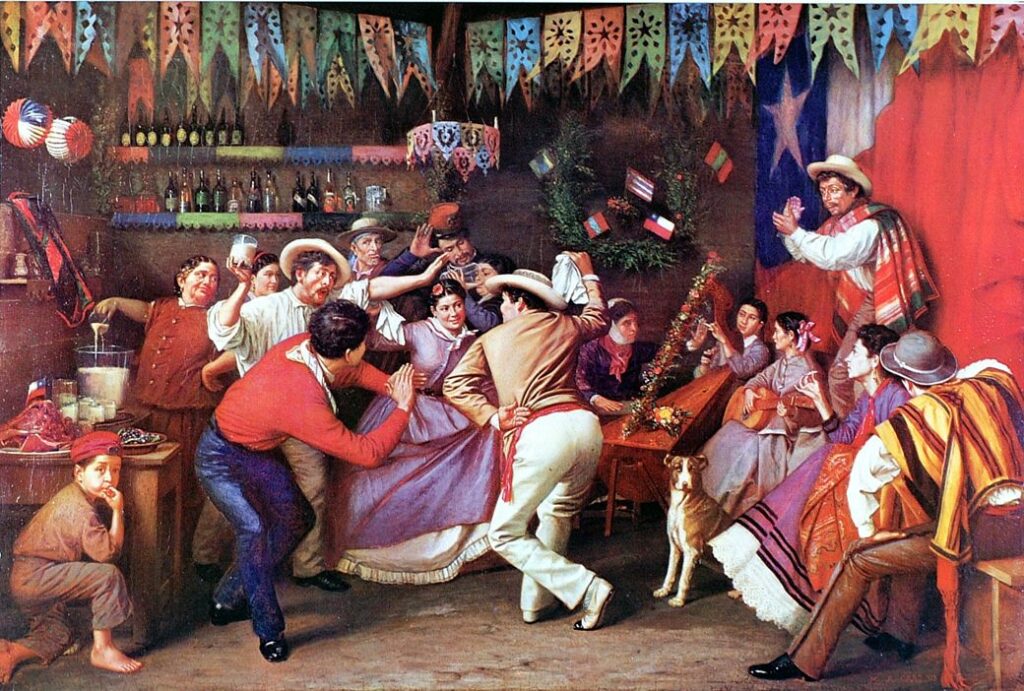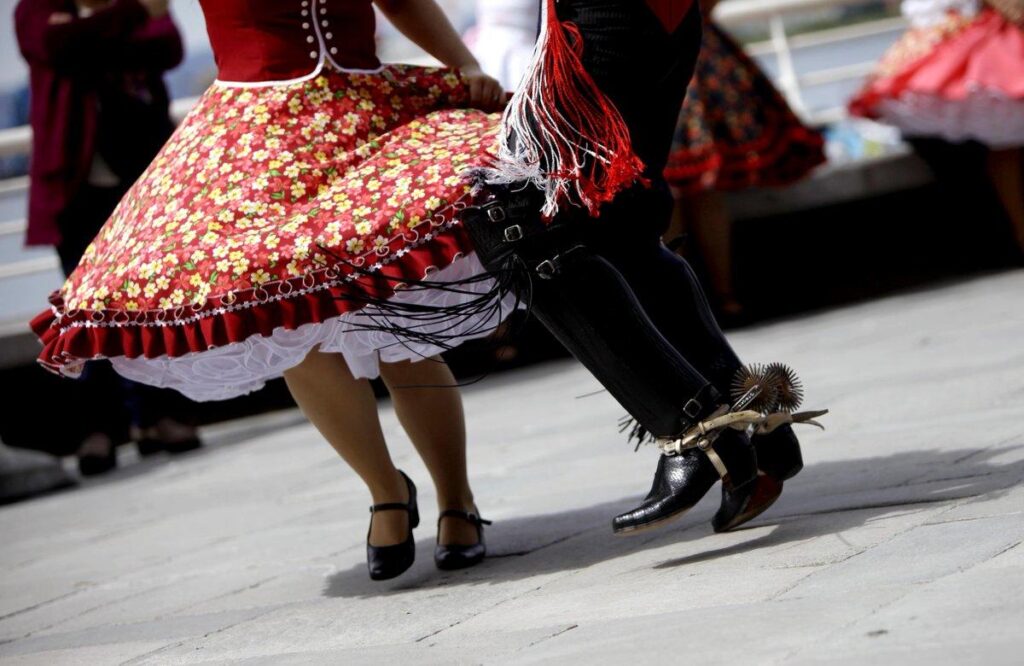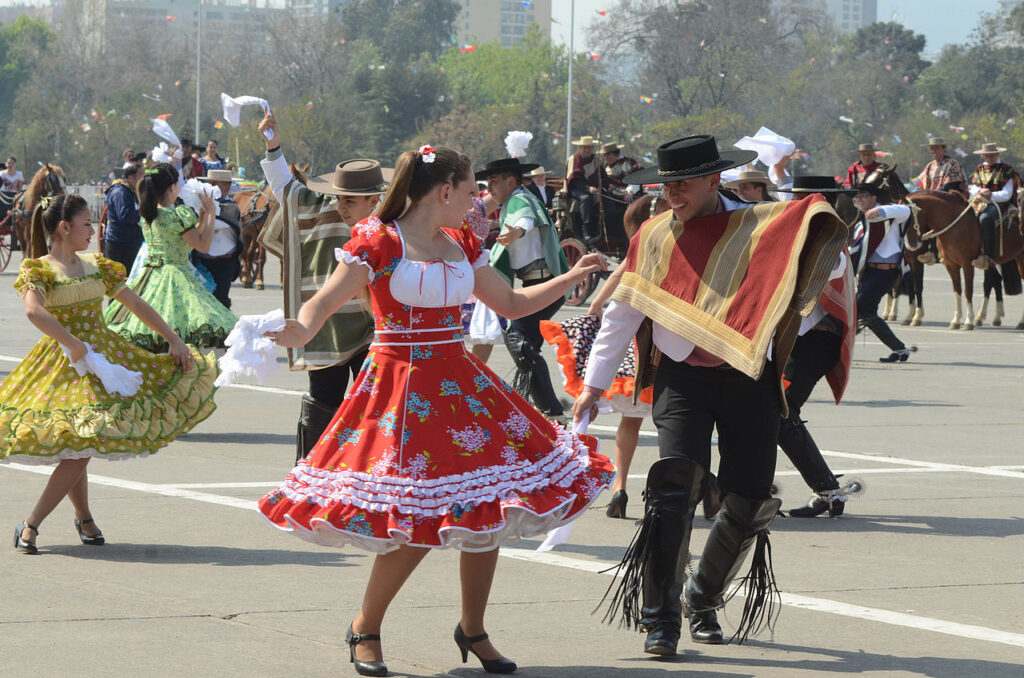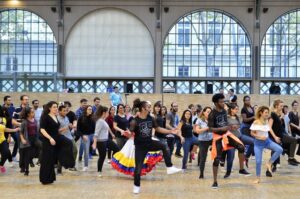La Cueca: The Latin Dance That’s Taking the World by Storm
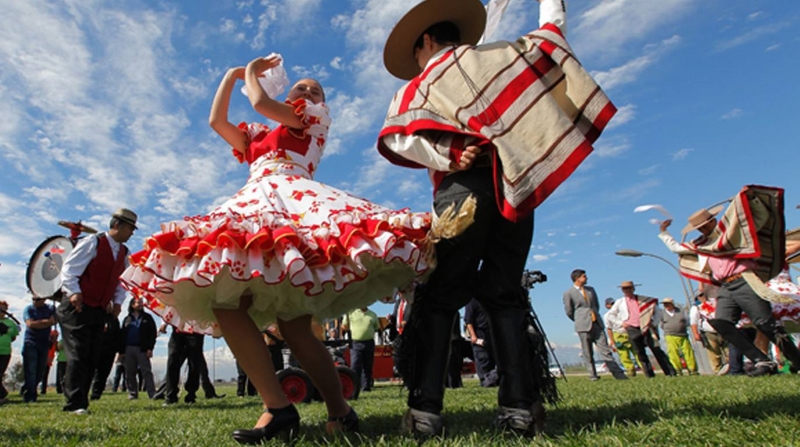
Dance, as a common language, transcends borders and communicates the essence of lifestyle. In the coronary heart of Latin America, there exists a dance that embodies the spirit of Chile—the Cueca. With its roots embedded in history and its colorful moves captivating audiences worldwide, La Cueca is a cultural treasure that has evolved into a global phenomenon.
The Roots of La Cueca:
La Cueca, the long-lasting national dance of Chile, finds its roots deeply embedded in the elaborate tapestry of Latin American history. Originating at some stage in the colonial era, the dance is a charming fusion of indigenous, African, and European impacts, every contributing to its specific person.
In its early bureaucracy, This Dance Form became a reflection of the numerous cultures that coexisted in Chile. Indigenous dance factors merged with African rhythms and European courtship rituals, growing an enthralling spectacle that transcended cultural obstacles. Over time, This Dance Form evolved into a symbolic representation of Chilean identification. The Dance became a cultural mirror, reflecting each rural and concrete tradition. Its importance extends past mere enjoyment, incorporating ritualistic elements that signify the essence of courtship and connection.
As the dance embraced numerous effects, it adapted to the converting sociocultural panorama, molding itself into a dynamic expression of Chile’s rich heritage. The roots of This Dance Form run deep, connecting generations and embodying the soul of a country via its rhythmic beats and sleek actions. Knowledge of the historical origins of This Dance Form is an adventure into the coronary heart of the Chilean lifestyle, a journey that maintains to captivate audiences around the sector.
The Dance Moves:
At the core of La Cueca’s enchantment lie its problematic and expressive dance moves. The dance is a communication between partners, a communication that unfolds through a sequence of carefully choreographed steps and rhythmic styles.
Basic Steps and Formations:
The elegance of This Dance Form is unveiled in its primary steps and formations. Dancers, often a man and a lady, engage in a dance that mirrors the courtship of roosters and hens. With particular footwork and coordinated moves, the performers create a visual symphony that tells a fascinating story. The dance is characterized by using turns, spins, and complicated foot-tapping, requiring a harmonious partnership between the dancers.
Symbolism in Movements:
Each movement in This Dance Form is weighted down with symbolism, including layers of meaning to the performance. The use of handkerchiefs will become a poetic extension of the dancers’ feelings, representing the feathers of the birds engaged in courtship. From the fluttering of the handkerchief to the depth of the footwork, every detail contributes to a narrative that transcends the bodily realm, capturing the essence of affection, passion, and cultural identification.
The Attire:
The visible poetry of This Dance Form extends past the dance actions to the traditional and vibrant attire worn by its performers. Rooted in records and cultural symbolism, the costumes of La Cueca add a rich layer to the general spectacle.
Traditional Costumes:
The apparel worn at some point during the Dance Form performances is a fascinating display of colors, fabric, and accessories. Women often don a colorful, complete-skirted dress referred to as a ‘pollera,’ adorned with tricky embroidery and complemented via a vest or blouse. Men, then again, normally wear conventional Chilean attire, consisting of a ‘huaso’ hat and a poncho. These costumes are greater than simply garments; they’re a visible illustration of Chilean identity and satisfaction.
Significance of Colors and Accessories:
Colors play a pivotal role in This Dance Form of costumes, with each hue wearing cultural importance. Vibrant reds, blues, and yellows frequently dominate, reflecting the strength and ardor inherent in the dance. Accessories consisting of ribbons, belts, and hats similarly beautify the attire, including a hint of authenticity and tradition.
Evolution of Attire:
The costumes of La Cueca have evolved, adapting to converting style trends at the same time while retaining the essence of tradition. While present-day performances may additionally see versions in style, the core factors of colorful, symbolic apparel continue to be a homage to the dance’s ancient roots.
La Cueca Around the World:
The magnetic allure of This Dance Form has transcended national borders, fascinating audiences far beyond the shores of Chile. This phase explores the worldwide phenomenon of This Dance Form, inspecting its reputation on the international stage and its particular effect on dance communities internationally.
Global Popularity:
This Dance Form has become a symbol of Latin American tradition, and its popularity is aware of no bounds. International activities presenting This Dance Form draw audiences from numerous backgrounds, creating an international appreciation for the dance. Festivals, competitions, and cultural celebrations exhibit the regularly occurring appeal of La Cueca, organizing it as a cherished shape of inventive expression.
Fusion with Other Dance Styles:
The worldwide attainment of This Dance Form has led to unique fusions with different dance styles. In various areas, artists and choreographers have embraced the dance, incorporating elements into present-day and conventional performances. This fusion now not only broadens the dance’s cultural effect but also fosters go-cultural collaborations, enriching the global dance panorama.
Learning La Cueca:
For those captivated using the rhythmic appeal of This Dance Form, the adventure into studying this cultural gem includes exploration, determination, and a profound connection to Chilean traditions.
Dance Schools and Workshops:
Across Chile and the past, there are dedicated dance colleges and workshops presenting fans the possibility to analyze the intricacies of This Dance Form. These institutions serve as cultural hubs, retaining and passing down the artistry of the dance from one technology to the following. From Santiago to global cities, individuals can immerse themselves within the wealthy history of La Cueca via expert steerage and established learning environments.
Online Resources:
In the virtual age, the accessibility of gaining knowledge has accelerated exponentially. Online systems offer a wealth of assets, tutorials, and virtual lessons for those keen to discover This Dance Form from the comfort of their houses. Whether a beginner or a skilled dancer, those assets provide a gateway to information on the nuances of the dance, its records, and its cultural significance.
Health Benefits of This Dance Form:
Beyond its cultural importance, learning and dancing This Dance Form gives several health advantages. The dance’s rhythmic moves beautify cardiovascular fitness, improve coordination, and offer an engaging shape of bodily workout. Additionally, the social issue of getting to know This Dance Form fosters an experience of networking, contributing to overall mental well-being.
Additional Tips:
- Immerse Yourself in Chilean Culture: To genuinely recognize La Cueca, immerse yourself in the broader context of Chilean tradition. Explore the country’s records, traditions, and tracks, as this can deepen your appreciation for the dance and its importance.
- Attend Live Performances: Experience the magic of This Dance Form firsthand using attending stay performances. Local fairs, cultural occasions, or committed dance performances offer a real and immersive experience with the dance, allowing you to witness its strength and emotion up close.
- Connect with Local Dance Communities: Engage with nearby dance communities, both in Chile and globally. Social media businesses, boards, or local dance golf equipment may be valuable sources for connecting with fellow fanatics, sharing reviews, and staying updated on activities and workshops.
- Learn About Regional Variations: This Dance Form has regional variations that upload particular flavors to the dance. Explore how one-of-a-kind areas within Chile have adapted and personalized the dance, and appreciate the variety of styles that exist inside this cultural phenomenon.
- Practice with Authentic Music: Practice La Cueca with a proper Chilean track. Understanding the rhythms and melodies specific to the dance will enhance your connection to its cultural roots and assist you in synchronizing your actions with the traditional beats.
Conclusion:
In the colorful tapestry of worldwide dance, This Dance Form emerges as a cultural jewel, echoing the history and identity of Chile with every rhythmic step. From its colonial origins to the present day, La Cueca has transcended borders, fascinating audiences internationally. The dance’s importance lies not only in its complex actions but also in its ability to tell memories of affection, culture, and country-wide delight.
As we have fun with the rich history encapsulated in This Dance Form, we apprehend its global effect, with worldwide events and collaborations enriching its narrative. The dance continues to be a supply of joy, fitness, and cultural connection, inviting people to explore the profound beauty of Chilean subculture. La Cueca, the dance that took root in Chile, has now grown to be a global phenomenon—a testimony to the power of dance to unite, inspire, and take the world with the aid of hurricanes.
Frequently Asked Questions:
Q1: What is the foundation of La Cueca?
A1: This Dance Form originated at some stage in the colonial generation in Chile, mixing impacts from indigenous, African, and European cultures. Over time, it evolved into the countrywide dance of Chile, representing a unique fusion of traditions.
Q2: How is This Dance Form achieved?
A2: La Cueca is generally carried out using a person and a woman. The dance includes complicated footwork, spins, and turns, with the dancers the use of handkerchiefs to mimic the courtship of roosters and hens. The handkerchiefs play a symbolic position in conveying feelings.
Q3: What is the importance of the handkerchiefs in La Cueca?
A3: In This Dance Form, handkerchiefs are used to symbolize the feathers of roosters and hens engaged in courtship. The dancers contain the handkerchiefs in their movements, including a layer of symbolism and emotion to the dance.
Q4: Are there versions of This Dance Form?
A4: Yes, there are nearby versions of This Dance Form in exceptional components of Chile. Each variation adds specific elements to the dance, reflecting the cultural range inside the country. using
Q5: Can everyone study This Dance Form?
A5: Absolutely! This Dance Form is open to people of every age and skill stage. There are dance faculties, workshops, and online assets to be had for individuals interested in getting to know this captivating dance.
Q6: What are the health blessings of gaining knowledge of and dancing in This Dance Form?
A6: Learning and dancing This Dance Form gives diverse health benefits, which include advanced cardiovascular fitness, better coordination, and a high-quality impact on intellectual well-being. The social issue of dancing additionally contributes to a sense of community and connection.
Q7: How can I find these Dance Form events or performances?
A7: Stay informed about La Cueca events by checking neighborhood cultural calendars, attending gala’s or cultural celebrations, and becoming a member of online communities committed to Latin dance. Social media systems and dance groups frequently share facts about upcoming activities.
Q8: Are there unique costumes for dancing in This Dance Form?
A8: Yes, traditional costumes for This Dance Form range through gender. Women typically put on colorful attire called ‘polleras,’ whilst guys put on traditional Chilean attire, which includes a ‘huaso’ hat and poncho. The costumes are wealthy in symbolism and
contribute to the visual storytelling of the dance.
Q9: Can This Dance Form be danced outdoors in Chile?
A9: Absolutely! This Dance Form has won worldwide popularity, and fans around the world actively take part in getting to know and performing the dance. It has ended up being a cherished cultural expression beyond Chilean borders.
Q10: How can I hook up with different La Cueca fans or dancers?
A10: Connect with fellow This Dance Form lovers using online forums, social media agencies, or nearby dance groups. Attend This Dance Form workshops, occasions, and lessons to satisfy like-minded folks who percentage a passion for this dynamic Latin dance.
READ MORE: Exploring the Beauty of Tabasco Mexico: A Traveler’s Guide

